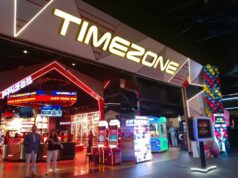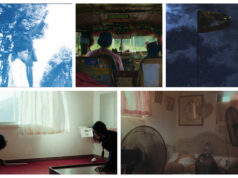Instituto Cervantes holds exhibit on literary legacy of Miguel Hernández
FROM July 25 to Sept. 16, the Instituto Cervantes de Manila will be holding the exhibition, Miguel Hernández, a plena luz, in its center in Intramuros.
Organized by the Provincial Government of Jaén, this exhibit is one of the projects done in commemoration of the 75th anniversary of the death of the poet Miguel Hernández, who hails from Orihuela, Alicante. Its purpose is to make people aware of his literary legacy, which is safeguarded by Jaén’s provincial government through the Instituto de Estudios Giennenses (IEG).
Curated by Juan José Téllez, the Director of the Centro Andaluz de las Letras, Miguel Hernández, a plena luz was first opened in Jaén in December 2017.
In 2018, the exhibit went on an international tour, taking the poet to three continents. The exhibit has been seen in Instituto Cervantes branches in London, Manchester, New York, Chicago and Dublin. After Manila, the only Asian city in the international tour, the exhibit will be heading to Toulouse and Paris.
During the planning of its international tour, Instituto Cervantes Manila had already been marked as an obligatory destination since the center’s library is named after Miguel Hernández. For more than a decade the Manila center of Instituto Cervantes had been programming cultural events to commemorate the poet.
Considered as one of the most authentic figures in 20th century Spanish literature, the literary beginnings of Miguel Hernández were marked by religiosity, which was predominant during that period, and a self-taught literary education based on the classics of the Spanish Golden Age.
His book, El rayo que no cesa (1936,) made him famous in the poetry circles of Madrid, where he had decided to move in order to try his luck as a poet.
The Spanish Civil War did not disrupt his literary career and in fact, during this time, he published Viento del pueblo (1937) and El hombre acecha (1938).
After the war, he was arrested and imprisoned, where he had died in subhuman conditions in 1942.
Centering on Miguel Hernández as an icon of poetry and enlightenment, the exhibition offers viewers a glimpse of his life through photos and interactive devices which display digital copies of his works and various documents.
The exhibition also contains original pieces, such as manuscripts, letters, book editions, photographs, and other personal objects. These were acquired by the Provincial Government of Jaén through the writer’s heirs.
The Exhibit Room of Instituto Cervantes de Manila is located in San Luis Complex, Intramuros, Manila. Entrance to the exhibit is free.
For details, visit the website of Instituto Cervantes at http://manila.cervantes.es and its Facebook page at www.facebook.com/InstitutoCervantesManila.



